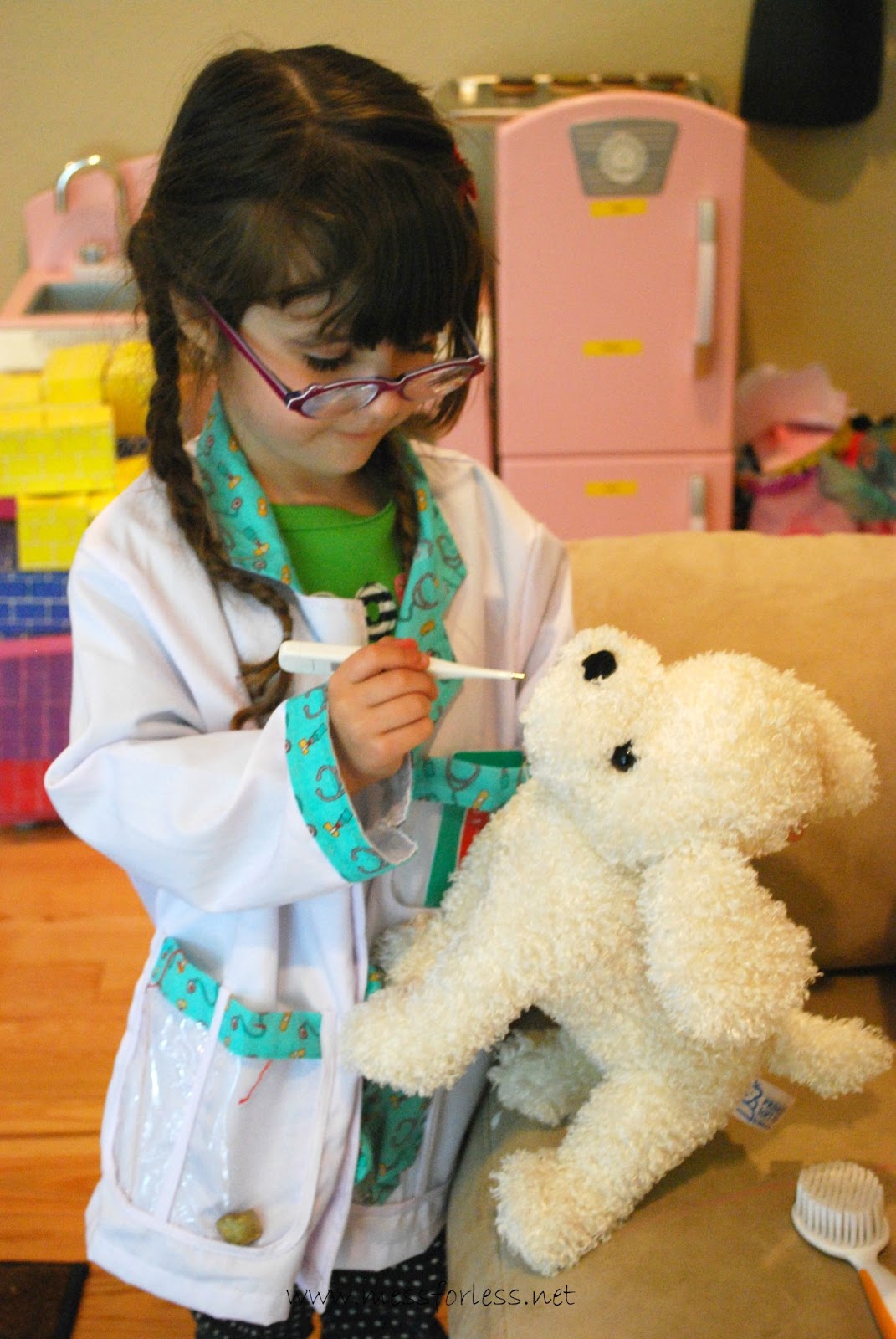Dramatic Play- Veterinarian Office

preschool girl pretending to take a stuffed white poodle's temperature using a thermometer.
Description
The dramatic play center provides opportunities for students to collaborate, engage in learning, and build language skills through conversations. Children have the opportunity to role play real-life experiences by taking on many roles in imaginative play. Utilization of the space as a veterinarian office allows the children the opportunity to take on the roles of pet owners, veterinarian, lab technician, and receptionist. It allows for children to explore, learn and practice care for the animals. It also encourages the child to think about scheduling appointments, medical tools, costs of medical care for animals, and to practice the exchange of money.
Purpose
- fine motor skills while grooming animals, performing physical check-ups and medical procedures on animals using tools such as tweezers and toy syringes, and attaching leash/collar and handling money
- math skills with the calculation of costs and exchange of money
- writing opportunities to write names of animal (cat, dog, etc.), medical charts, and cost of medical care
- expression of artistic ability through drawing of animals
- print exposure to animal names, medical charts, and pricing charts
- reading opportunities with exposure to variety of animal related books in center
- expression of feelings and emotions
- creativity, imagination, abstract thinking
- oral communication, vocabulary
- cooperation, sharing, taking turns
Suggested Materials
- toy animals (dog, cat, bunny, lizard, chicken, hamster, turtle, etc.)
- play food for animals (carrot for bunny, bone for dog, cans labeled as pet food, etc.)
- cash register with play money
- pet carriers, cages
- toy medical equipment (stethoscope, thermometer, scalpel, syringe, medical cart, medicine bottles, medical charts)
- clipboards, paper, notepads, pencils or crayons
- labels on cages and carriers with animal names
- bathing and grooming materials (play sink, small towel, brush, etc.)
- collar and leash to put on some of the animals (reinforce safe use of these materials with children)
- telephone
- calendar
- reading materials - books about animals, including nonfiction and fiction
Questioning Examples
These guiding questions can be used to assist the teacher, instructional assistant, or parent volunteers in supporting children's development and learning during play.
- Why did the animal need to visit the veterinarian?
- What can you do to make sure that pet is healthy before he/she leaves the office?
- What can you do to care for your animal after (medical procedure)? How can you keep your animal healthy?
- What types of medicine does the animal need?
- How can you make sure the animal takes the right amount of medicine?
- How much does the treatment cost?
Considerations
This center can be set up with the following areas included: cages or carriers for individual animals to be placed (labeled baskets, boxes or containers), grooming area with sink and other supplies to groom pet, medical table/cart with medical supplies, refrigerator or area for pet food, cash register and telephone area for customers to pay for services. A basket/tote with books about animals should also be in the center for students to explore. In addition, writing materials for students to have the opportunity to chart medical procedures, create labels, write care instructions, and record patient information should be included. Also, encourage children to try multiple roles in play at different times (veterinarian, pet owner, receptionist, lab technician, etc.).
This center should allow for enough space for at least three students to play with the furniture and props. The dramatic play center should be located in an area of the room that enables students to communicate without disrupting other children's work and play.
Photo Examples
Literature Connections
Many literature connections exist for this topic and can be read to students before introduction of the center or during learning of the theme of animals. These books can also be placed in the pet shop center for independent exploration by the children. The following are a few suggestions:
"A Day in the Life of a Veterinarian" by Heather Adamson
"All About Dogs and Puppies" by Laura Driscoll
"Biscuit Visits the Doctor" by Alyssa Satin Capucilli
"Caring for Your Pets: A Book About Veterinarians" by Ann Owen
"Farm Animals" by Nancy Dickmann
"It's All About Me-Ow" by Hudson Talbott
"Let's Meet a Veterinarian" by Gina Bellisario
"Mama Cat Has Three Kittens" by Denise Fleming
"My Big Animal Book" by Roger Priddy
Downloadable Resources
These downloadable documents are meant to be printed and used within the center. They are not for electronic use by students.
Veterinarian office patient information sheet
Veterinarian office prescription pad
Veterinarian office signs
Clipart from Pixabay.com
Frame on the center signs is from www.mycutegraphic.com